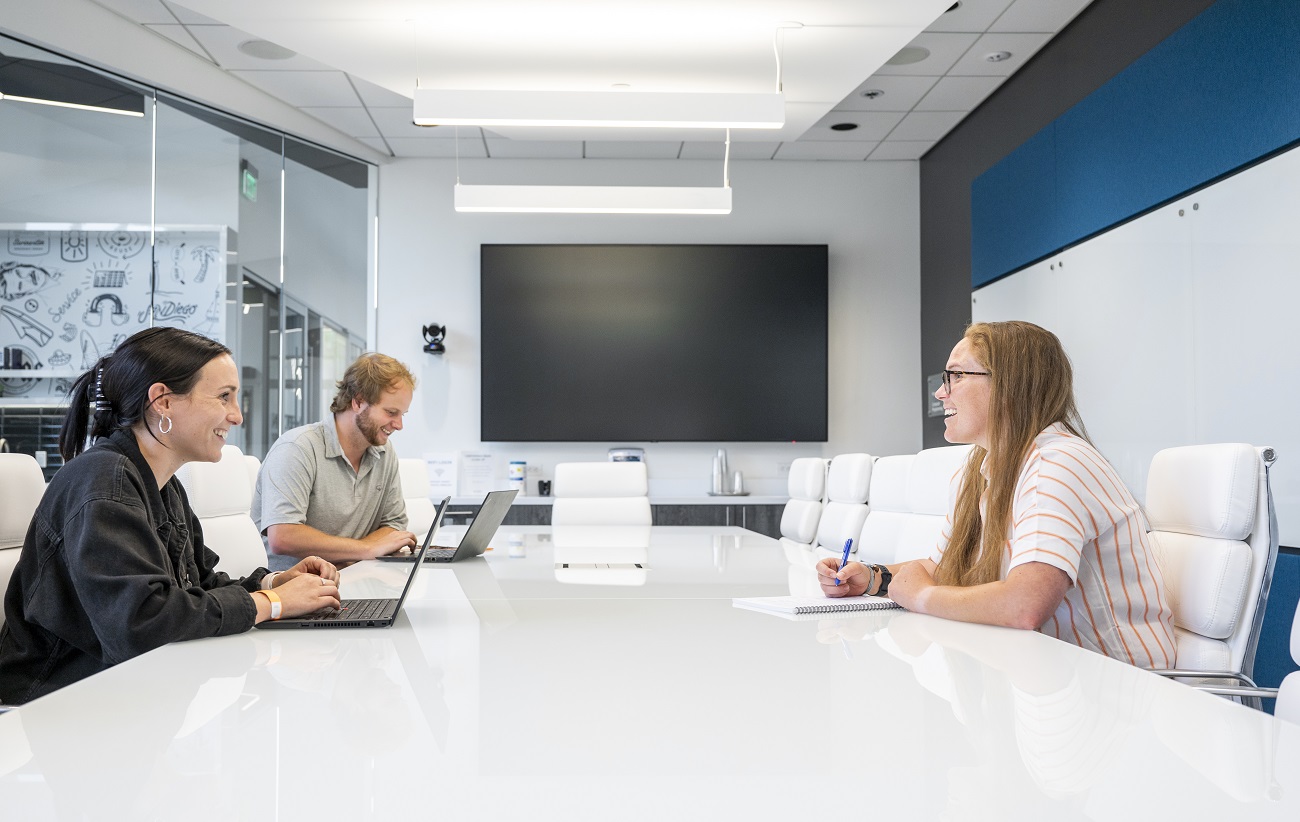Originally published in The Corporate Citizen magazine, Issue 43, Volume 2. Read the full issue here.
According to a CNBC survey on workplace happiness, more than 9 in 10 workers (91%) who have a mentor at work report feeling satisfied with their jobs, including a majority (57%) who feel “very satisfied.” This same group is also more likely to feel satisfied with their compensation and appreciated by colleagues as compared to those without a workplace coach. Meanwhile, a 2022 survey of working adults conducted by the Gallup Center on Black Voices found that mentors and sponsors are “crucial to shaping the employee experience.” Mentors themselves benefit from structured mentoring; they’re more likely to be retained and to mentor others both in formal workplace programs and outside of them in the future.

Employees at Solv Energy participate in an employee mentoring program
Powerful stuff, right? But, not every employee lucks into a mentoring relationship. Most mentoring still happens informally, leaving out a lot of workers—especially workers from underrepresented groups. Gallup data indicates only about 40 percent of employees report having a mentor at work. The other 60 percent may be missing out on a lifetime of enhanced job satisfaction or career advancement opportunities as a result.
So, how can companies be more intentional about mentorship opportunities—implementing structured programs that support team members equally? How do smart corporations go about pairing associates together—one-on-one, in groups, or perhaps even with local students—for the most effective learning and career growth experiences? What are the different mentoring models companies might follow? And what are the benefits derived from an investment in mentoring? We spoke to corporate citizenship leaders at BCCCC member companies SOLV Energy, Vertex Pharmaceuticals, and AAA – The Auto Club Group (ACG) for answers to these questions and more.
““Without this move to technology, our program would not have been manageable at [the current] size. One of the key aspects of MentorcliQ’s mentoring software is the automated SMART matching capability… Not having to manually match our growing participant pool saves us time and money. As an innovative technology company ourselves, we fully embrace leveraging technology to be more effective and efficient in our talent management efforts.””
What are the different models of mentoring in the workplace?
Workplace mentoring programs can happen in many forms and address a variety of goals. We’re all familiar with the concept of traditional, one-on-one mentoring. Typically, the one-on-one mentor is someone who is not in a mentee’s direct line of supervision, and who can offer helpful guidance about where one might need development and how to get it. This type of mentor might advise a mentee on big-picture issues like career path, while also helping to negotiate more day-to-day issues like office politics, processes, and relationships with peers and superiors.
But professional learning, development, and networking can also happen in groups, through mentoring circles. Group or circle mentoring usually involves a facilitator, one or more mentors, and multiple mentees. Group mentees typically have something in common, whether it’s tenure, shared skills, goals, or experiences. Group mentoring is often found in new employee onboarding programs or sometimes happens within employee resource groups (ERGs) or business resource groups like those at T. Rowe Price. Mentoring is also a common practice among companies with supplier diversity programs.
Vertex Pharmaceuticals is a good example of how companies can utilize different types of workplace mentoring to address different audiences and different goals. The company offers a Global Mentoring Program for all permanent employees in its offices around the world. Vertex’s employee resource networks (ERNs) also host mentoring programs including reverse mentoring and peer-mentoring circles. These programs are also open to all permanent employees globally.


